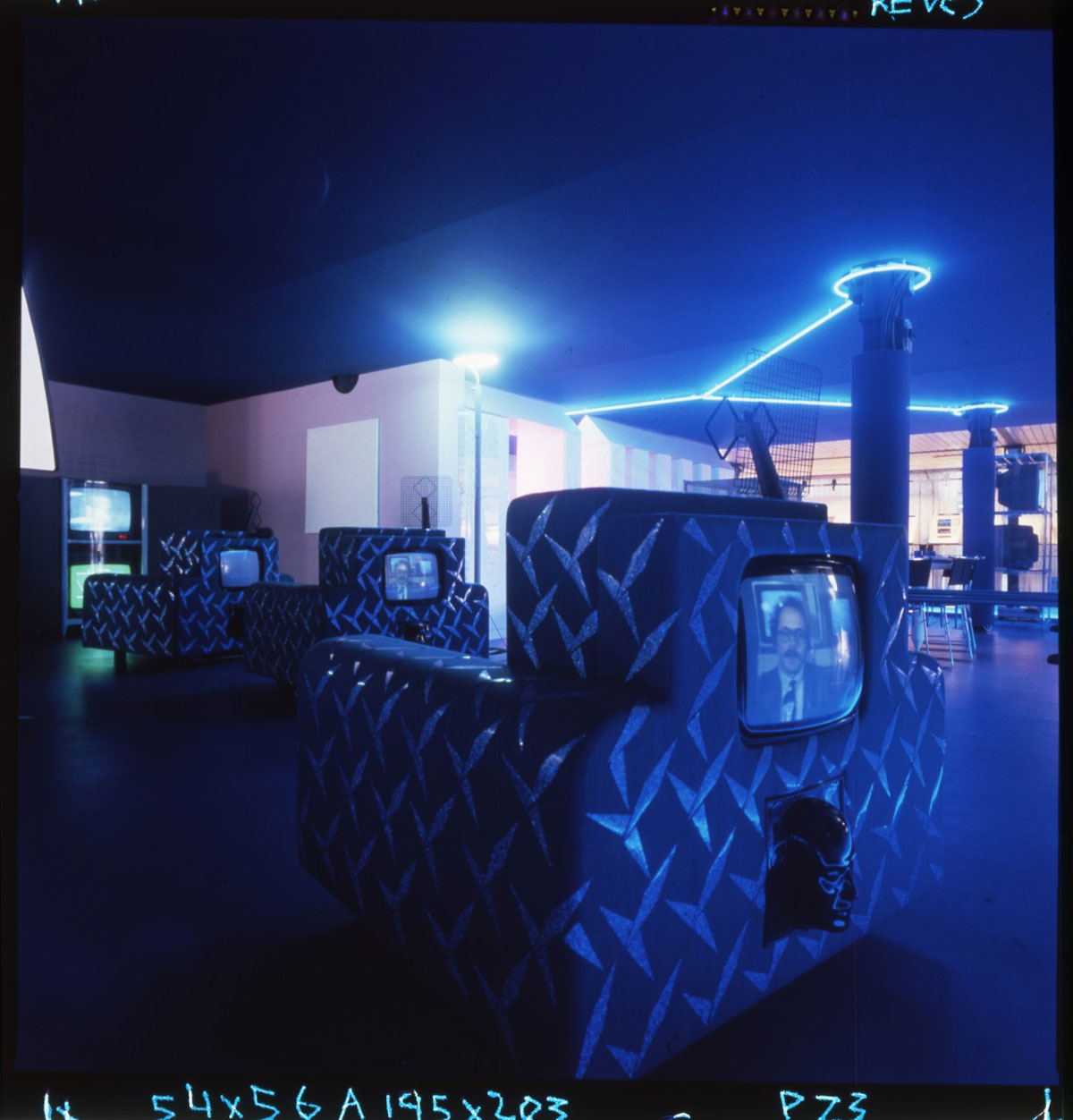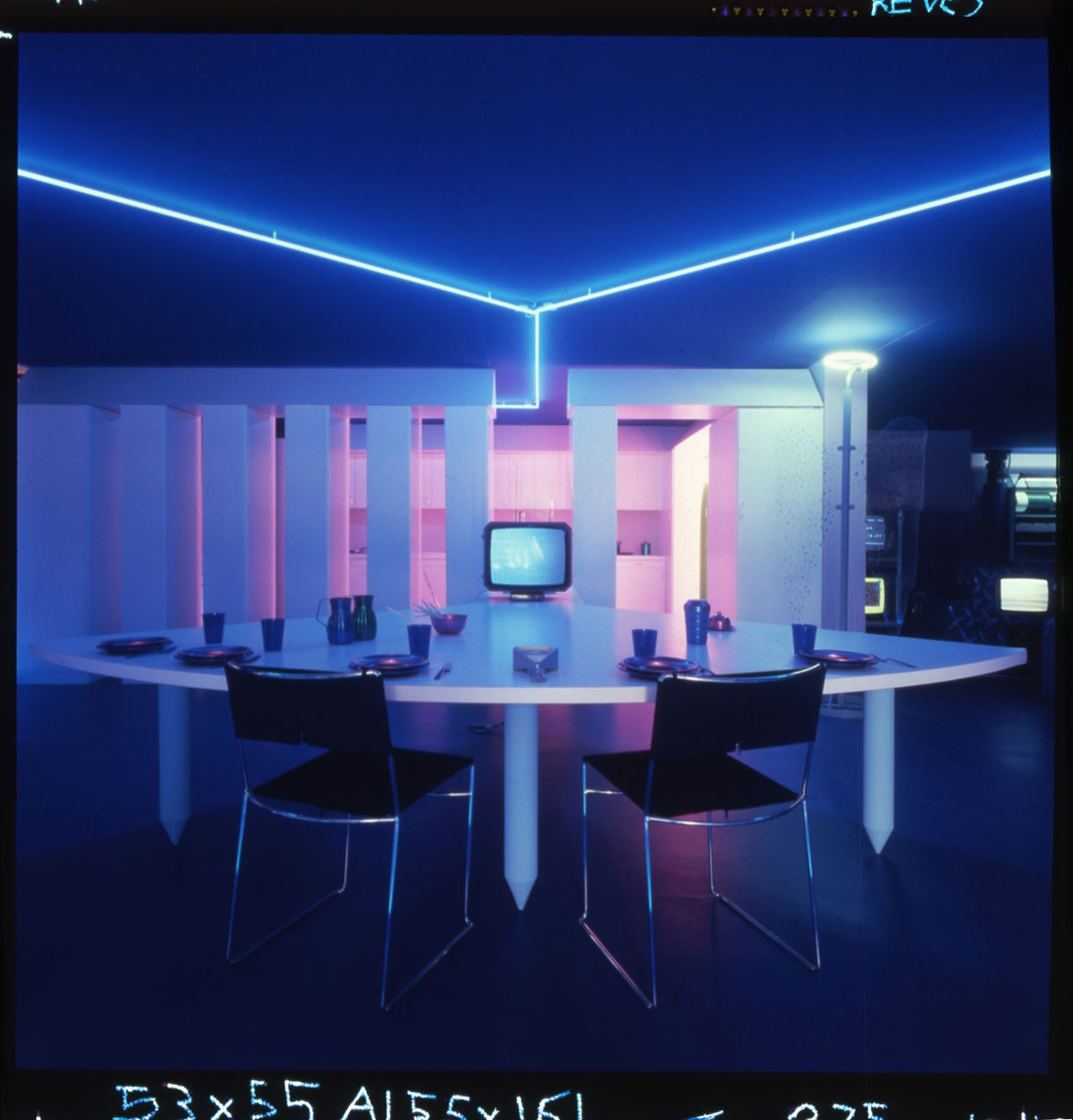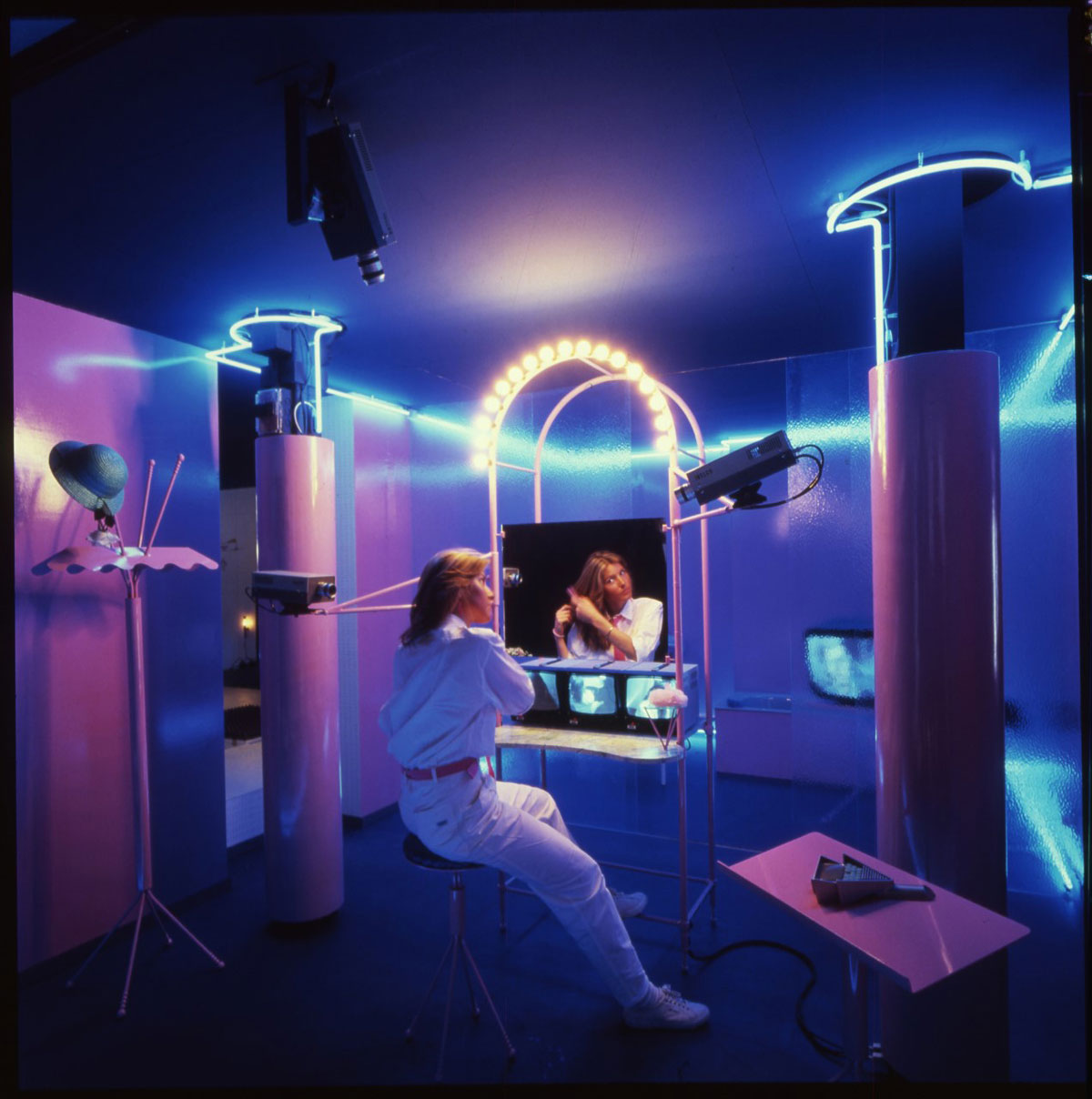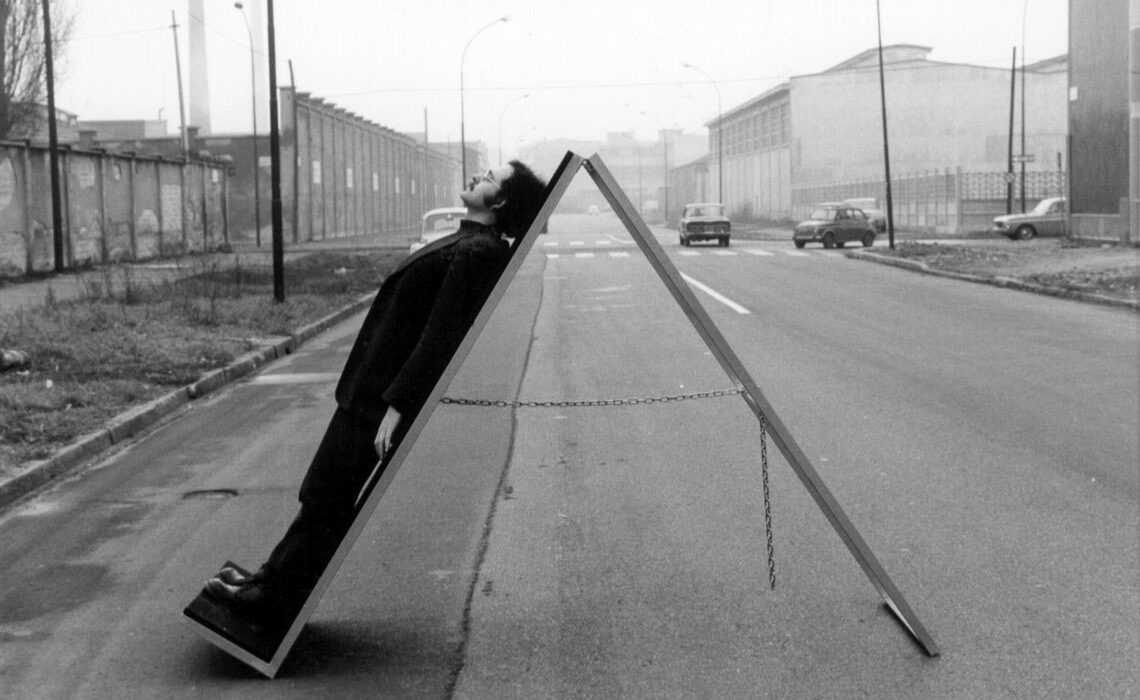
Ugo La Pietra (Bussi sul Tirino, Pescara, 1938) is a number of things. A renowned artist, architect, designer and tireless experimenter, he prefers to define himself as “researcher in the system of communication and visual arts”, or even, an “aesthetic operator with the task of creating unbalance“. This is because, as a visionary inventor and an investigator of reality, he tries to rethink the world from scratch, eliminating our usual points of reference, and this concept is well expressed in his work “Immersioni” (1967-1972).
Central to his work are the innovative studies on the relationship between the individual and the environment he has been interested in since the early 1960s, crossing different artistic currents in the following years, such as conceptual art, sign art (with the Cenobio Group) and environmental art, art involved in social themes, narrative art, artist’s cinema, new writing, neo-eclecticism and radical design. Among the various groups he founded in the ‘60s he was also a jazz player in the “Kids Stompers Jazz Band“, and in 73 in the “Global Tools“: a series of educational workshops for individual creativity designed for “architects, radical designers and artists”. In the artistic field he also formulated the hypothesis, with Alberto Seassaro, of a “synesthesia between the arts“, which attempts the union of all formal disciplines that have as common denominator “the sign”, which resulted in “The Lunar Hare“.
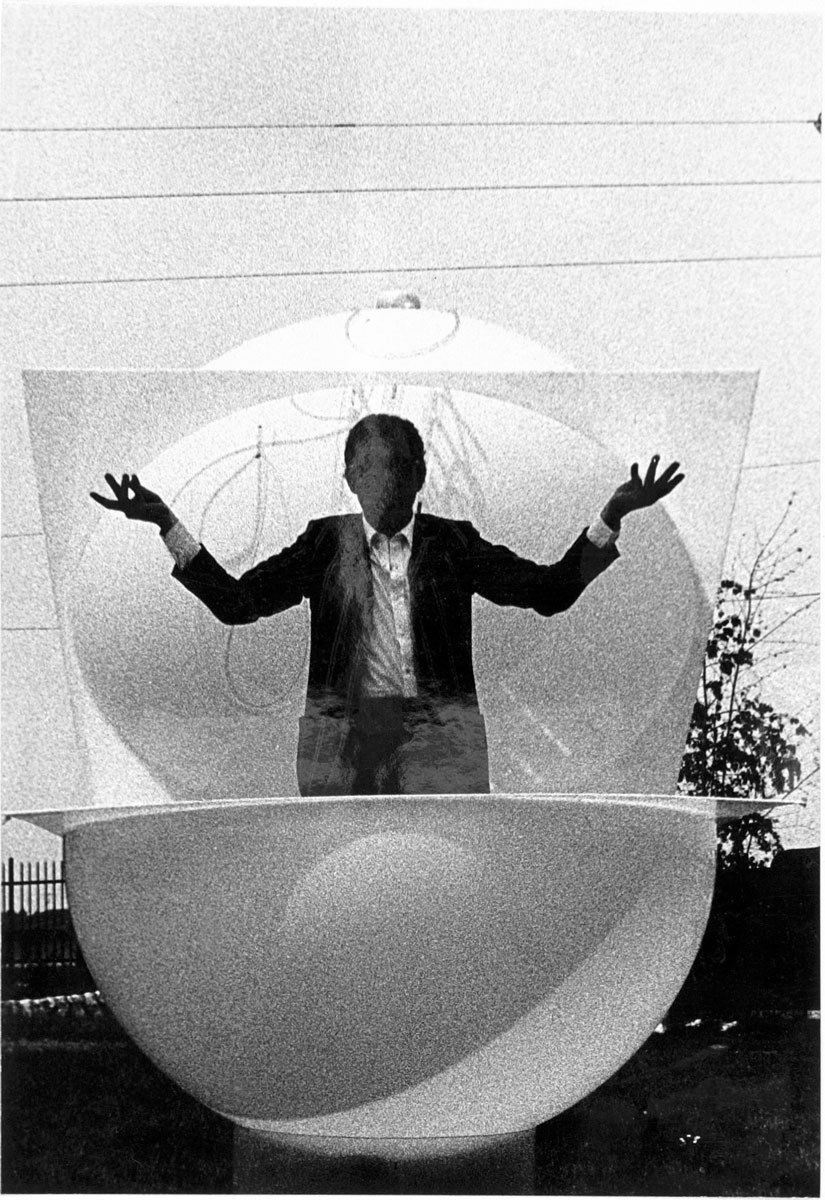
Uomouovosfera, from “Immersioni”, 1968 – Courtesy Archivio Ugo La Pietra, Milano
La Pietra has also taught in many departments of Architecture and Design in universities and Italian art academies, and he also published in the magazines “Domus”, “D’ARS”,”AU” and “Mestieri d’Arte”, where he is the creative director. He has communicated his work both as an artist and as a curator in many important exhibitions in Italy and abroad: MoMA in New York, Triennale di Milano, Venezia Biennale, Museum of Contemporary Art in Lyon, FRAC Museum in Orléans, Museum of the Ceramics of Faenza, Mudima Foundation of Milan, MA*GA Museum of Gallarate. He is the winner of numerous awards, like the “Utopia Prize” by Eugenio Battisti during the III International Congress on Utopias (1989) at Teatro Argentina in Rome. In 1979 he was awarded the Compasso d ‘Oro for research and in 2016 the Compasso d’ Oro for his career. He currently lives and works in Milan.
In this interview, his current interests emerge between questions. Contextualizing society and in particular the city we live in, we take into account the urban and environmental possibilities that can still be considered, in terms of our changed habits in this delicate period of epidemic. Recalling various past exhibitions and projects, here are some crucial aspects of contemporary life, examined by the artist.
(Martina Salerno) Since we both live in Milan I would start here. I would like to reflect with you on the development of this city, considering a type of urban planning that moves according to utilitarian logics, starting from your critical reflections, for example in The city flows at my feet (1973-2015) or in Green resolves (2013 -2015). Although in recent years some areas have been redeveloped in full “green” style, in the streets and overall in the widespread capitalized thinking, green is considered an extra aspect, an additional and decorative luxury benefit, an optional aspect and, with this upcoming ecological design approach, it is a “reconquest” of environmental standards. In the example of the Commutatore (1970), which origins in The Unbalancing System (1967), you want to reiterate that it is necessary to eliminate labels, what is already defined, so as to create new names, new things. As an artist, architect and designer, have you ever had – especially when observing recent technological innovations – the surprise of identifying in the urbanized city, objects or systems that pertain to this concept of reinvention?
(Ugo La Pietra) Creating a new model of the city through a series of small and large innovations has always been my way of thinking and working. Not only through a whole series of models for understanding and decodifying the environment, but also through “design models”.
It would be enough to recall my project for the exhibition “Italy: the new domestic landscape” of ’72 at the MoMA in New York where I hypothesized, thanks to the help of the first audiovisual equipment (videotape), a system that put in relation, or in communication, the domestic space with urban space, and vice versa (through the use of the electronicCicero and the Videocommunicator).
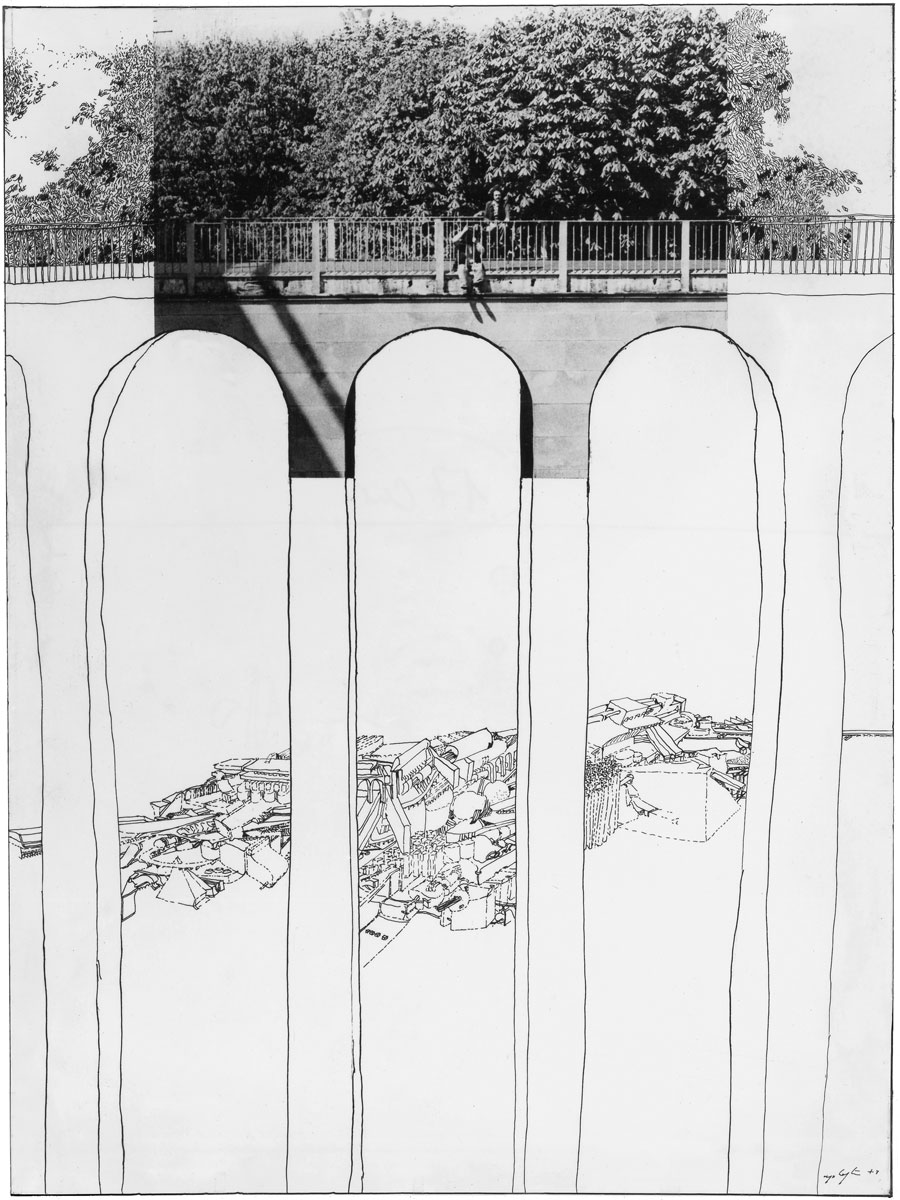
La città scorre ai miei piedi, photomontage, 1973 – Courtesy Archivio Ugo La Pietra, Milano
But our latest technological innovations could do a lot, especially if we think of at least two major gaps or, better, design deficiencies: the lighting system – Milan has different models of lamp posts for every street and square (sic!) – and the information system.
In 1980, in the city of Turin, a smart city design councilor commissioned Achille Castiglioni for the lighting project, Ettore Sottsass for kiosks (gazebos and newsstands) and Ugo La Pietra for information. On that occasion I designed my first information system “InformaTorino”, technologically very advanced for the time. Unfortunately, the three projects, after the formal assignment, were not completed because the councilor was convicted and arrested for “administrative misconduct”…
(MS) This reasoning lends itself more generally to the discourse of the urban society that was born, in some way “bureaucratized”, detached from the citizen and from the person, as we see for example in City without morals (2010-14) . With Arte nel sociale (1976-79) you reinvent urban facilities, turning them from service structures in the city to original service structures for the domestic space. Urban service structures generate aseptic urban planning and exercise a moral authority that we can only obey to. Now more than ever, among these we find the adhesive signage on the street and in the subway tunnels, which distances us and directs us, and it is the most obvious and obligatory element for those of us who live in a metropolis. This, according to your words, includes “degrees of freedom” and conditions us – it offers us some autonomy, but “under condition of”. In your opinion, are there any alternatives? Is there the possibility of undermining (ideally or really) this system, or of making it more suitable for citizens and therefore for the community?
(U.L.P.) Overcoming the “imposed codes” of “urban signage” and information urbanization made exclusively of advertising is certainly possible! More than a century has passed in which artists and architects have tried to give answers to this image of an urban structure of “imposed signs” we now react to automatically.
Below, I summarize some of my old proposals, models, projects and considerations:
- Art and territorial design. Building signs dedicated to territory identity, starting from its resources, even the deepest ones, such as history.
- Making art for social issues.
- Urban green. At one time importance was given to certain places built with green areas: gardens reserved exclusively for divinities, protected gardens, because it was within nature that man could feel the presence of the divine. Then there were the “artfully” designed and built gardens (the Italian garden) where concepts were integrated with spectacularization (the labyrinth, for example). Today we should still refer to these models, but green areas in the city are forced to deal with traffic, parking lots. Green space is suffocated by asphalt, it is placed in flowerbeds with a few centimeters of dirt, it is organized in “little gardens” (mindful of the many gardens of the nineteenth century) where generic green frames the monuments. Too often, urban green is reduced to a tool to fix, correct, complete, hide, to improve the errors and the shortcomings and the incompetence of certain architects/interior designers in dealing with the real problems of the urban environment.
- The city. For urbanized people, the city is a complex of disconnected relationships whose rules are defined by the commercial system (you go where the shops are, you go near bars and restaurants); for urban planners the city is made of coded maps; for politicians the city consists of lots of votes. It would be enough to think and practice the urban space as one’s “home”, but having long ago lost the love and pleasure of staying at home (in fact, the latest generations no longer buy home furniture) it is difficult to propose this housing model in the city.
- History. The history of cities no longer represents the basis for planning. For example, the history of Milan is that of a horizontal city (yet skyscrapers are born), and it is also the history of a city of water (yet Navigli are covered).
(M.S.) Going back to what has been said, we cannot avoid talking about the lockdown. By its effect, but first of all by intrinsic natural needs, when we leave the house we still seek our “internal” comfort, perhaps with a coffee or with the company of a loved one, having somehow in mind that “to live is to be everywhere at one’s home”. In the video I take this quote from, The reappropriation of the city (1977), and in the Interior/Exterior project (1977-80), the intent is in fact to bring the interior to the exterior, trying to make society more sensitive and ethical, a society that listens to people. This cannot be reversed from outside to inside: the house, especially now, becomes a sort of refuge. First of all, for our safety, we are asked to lock ourselves up in that house-refuge which, however, as you maintain, we can never value enough. Unfortunately, only by being in quarantine were we able to change its meaning, even if a little negatively (due to the melancholy projected outside), on the other hand we also re-evaluate it positively, thinking more carefully about the interiors: the atmosphere, furnishings, objects, and every space we have available. What exactly has changed for us inside our homes? What is particularly functional and livable in a state of forced closure? At the same time, how to overcome the downsizing of vital space?
(U.L.P.) During the “forced closure” we realized that we could not practice the model of interpenetration between public space and private space. On the other hand, when there was no virus and the consequent forced closure, young and old people did not stay at home in the evening (as the older generations did) but went “to the city”. They went to the city in order to be together with many others: “We live crowded solitudes”, I wrote years ago to describe this phenomenon.
Now being able to reconcile on the one hand my old model of behavior (“to live is to be everywhere at home”), and on the other hand the practice that has developed over the last twenty years of being, all and many, together “for the sake of being together”, is certainly very difficult. These two patterns of behavior were completely blown away by the virus. Today we can only re-read the models we practiced trying to take advantage of this “terrible existential moment” to rediscover the meaning of “living at home”, also recovering the old discipline that was taught in the 1950s at the Faculty of Architecture, which was “Interior architecture”, and also how to find through street design (but not “road signs”!) the possibility of creating living spaces for the growing crowd that, in the evening, after the various daily activities, does not stay home and watch TV, but doesn’t look for other ways to “spend time” either.
(M.S.) A parallel space that we have had to revalue is the virtual one: internet is both an internal and external place, and you have dealt with it in Bi-tridimensional Memory (1980), The telematic house (1983), Natural/virtual (1992) and even before the internet itself with the project Videocommunicator (1972). Our personal dimension also changes in this respect, not only in terms of space but also of time, upsetting and reshaping our habits. In this sense, this seems to be the preferred field of experimentation with a view to a radical rewriting of our routine, and perhaps even re-entering a bit of that of a neo-eclecticism in a telematic version. What do you think?
(U.L.P.) From the world of education to the work field, everyone agrees on the fatal (if not natural) growth of IT and telematic activities. Already in the 70s with my proposals from The Telematic House (MoMA New York, 1972; Fiera di Milano, 1983) I demonstrated, and often anticipated, the birth and growth of this social, economic and cultural practice. But it is also true that with the “Natural/Virtual” exhibition at the Milan Triennale in 1979, and then with that of 1992 (“Casa Naturale, casa Virtuale” with Gianfranco Bettetini) I highlighted that, in any case society would have opposed just as many energies for growth in the real world to growth in the virtual world.
Ugo La Pietra, “La Casa Telematica”, MoMA of New York, 1972 – Milan Fair, 1983 – 1983
Courtesy Archivio Ugo La Pietra, Milano
Today everything seems to develop these oppositions! We see this above all with the new generations: on the one hand they live with and for technological systems, and on the other hand they find in the relationship with nature (cultivating crops, raising livestock…) an alternative for life and work. Unfortunately, the school system does not know how to cultivate the two practices I described. Our universities have never developed “laboratories”: in the last fifty years, when I was an architecture student and today, no professor has ever taken his students to a construction site to see, or even better, build a brick wall together, or see a quarry, or how a stone is extracted and how it is worked…
Likewise, in the Academies of Fine Arts it is very rare, not to say unusual, that professors make students go out with the possibility of doing “exercises” directly in glass, metal, ceramic workshops… On and off, the artist in the future will discover and rediscover the “pleasure of doing” and manipulating, and in alternating phases they will let themselves be carried away by the most reckless technological innovations. Everything always strictly within their “discipline”.
(M.S.) To conclude, let’s move on to the world – or system – of art. Your video The Great Occasion (1973) speaks for itself, and it raises questions in reference to artists themselves (whether emerging or established), but above all to their relationship with institutions. Considering both entities, what are the limits still unchanged that the institutions are unable to resolve? On the other hand, what solutions can the artist apply to be able to express without incidents of a “higher order”?
(U.L.P.) Despite the many attempts that have taken place in recent decades, the artist continues to build-demolish-build within the system. He engages all his energies in this reality, closed in the logic of the “system”. Attempts to get out of it have been rare, since once we leave, society no longer recognizes us and therefore the artist’s “work” loses its value and meaning. So you have to stay in the “system”! And in doing so, follow or oppose the logic of the market, which is constantly changing, and especially in recent times, creates enormous difficulties in placement.
Almost all of our national market, which compared to the international one is medium-low, and until yesterday governed by a system of galleries, has now completely failed due to the proliferation of auctions. Our Museums do not create a “system”, also because they hardly perform two of the three fundamental activities, conservation and dissemination, but they are not even able to activate the third one, and perhaps most important, the acquisition of the works. The artist continues to be increasingly pressed to enter something that unfortunately cannot be called a “system”. Even today, Italian artists have no choice but to follow the traces of other paths, as Piero Manzoni did in the late 1950s when he brought his “Infinite Lines” (“Lines of infinite length” series, 1959) to Northern Europe.
